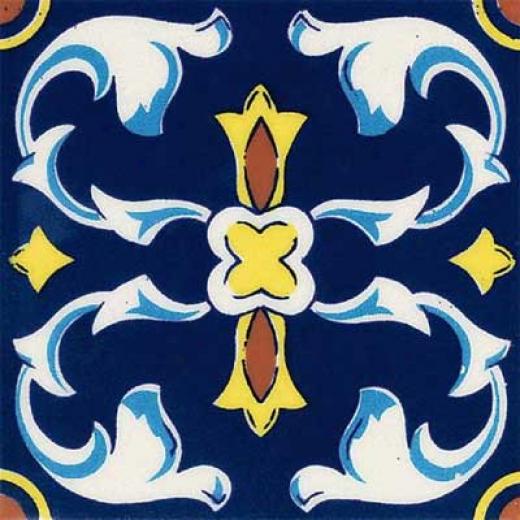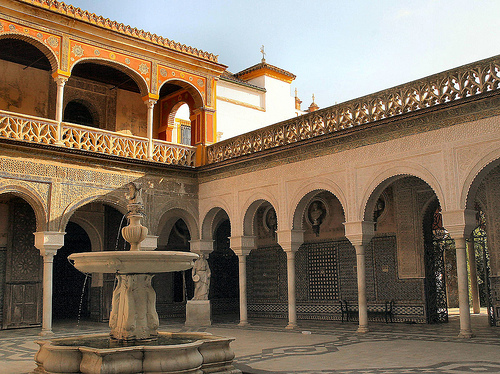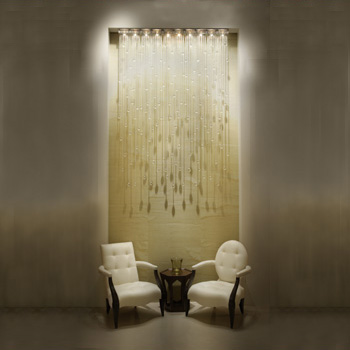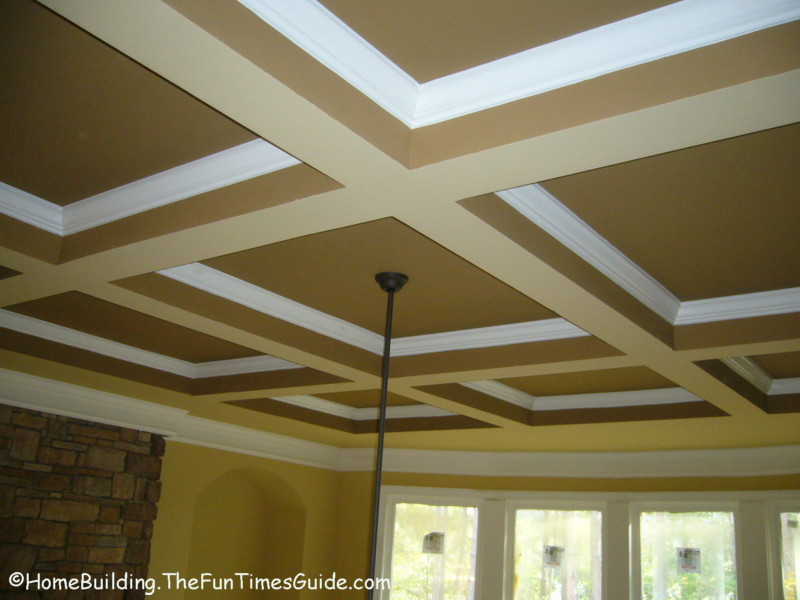 Torre Tagle Palace, Lima, Peru. Spanish Baroque style. Upper story
colonnade, wood beam structure, stucco walls.
Torre Tagle Palace, Lima, Peru. Spanish Baroque style. Upper story
colonnade, wood beam structure, stucco walls.
I also admire the Spanish Colonial style. Spanish Colonial buildings are inward looking. Massive whitewashed adobe exterior walls surround a sunlit interior courtyard.
 Spanish Hacienda in Yucatan, Mexico
Spanish Hacienda in Yucatan, Mexico
From the outside, large wood doors with wrought iron hardware lead to a dark tunnel-like corridor which takes you to the inner courtyard. A fountain often serves a as a focal point of the courtyard and may have been the water source in years past.
 Spanish colonial courtyard with fountain and colonnade, whitewashed walls, and Spanish tile roof beyond.
Spanish colonial courtyard with fountain and colonnade, whitewashed walls, and Spanish tile roof beyond.
Surrounding the courtyard on the ground and upper floors are colonnades with the rooms opening beyond. The colonnades provide a circulation path protected from the rain and more important, the strong Hispanic sun.
 Torre Tagle Palace. Interior courtyard below
with surrounding upper floor colonnade.
Tile floors.
Torre Tagle Palace. Interior courtyard below
with surrounding upper floor colonnade.
Tile floors.
Materials include adobe bricks, protected by stucco, whitewash, and deep roof overhangs, wood doors, window shutters, beams, tile floors and fireplace surrounds as well as kitchen and bathroom surfaces including counter tops.

 Spanish Colonial tiles.
Spanish Colonial tiles.
Roofing is provided by the familiar red clay Spanish roof tiles. This style develkoped to make use of economical and available materilas, to keep one out of the sun as much as possible, and to allow cross ventilation between the courtyard, through the one room deep perimeter and the outside. The style also provided privacy and security.






![[spain+24.jpg]](https://blogger.googleusercontent.com/img/b/R29vZ2xl/AVvXsEhzPayUXTckExVPq1QYNlHgoFlLHHGQyJqU_YkCxzvUuTNqAmgQey5t3YG-uyIkH4wRvFkrI3sK-RUGsq029ZJDS_RFcgJ7zV8blratXS1TiqQRZnGy5Mio_phClA3_CksR9YCH0-x8JpPn/s1600/spain+24.jpg)













